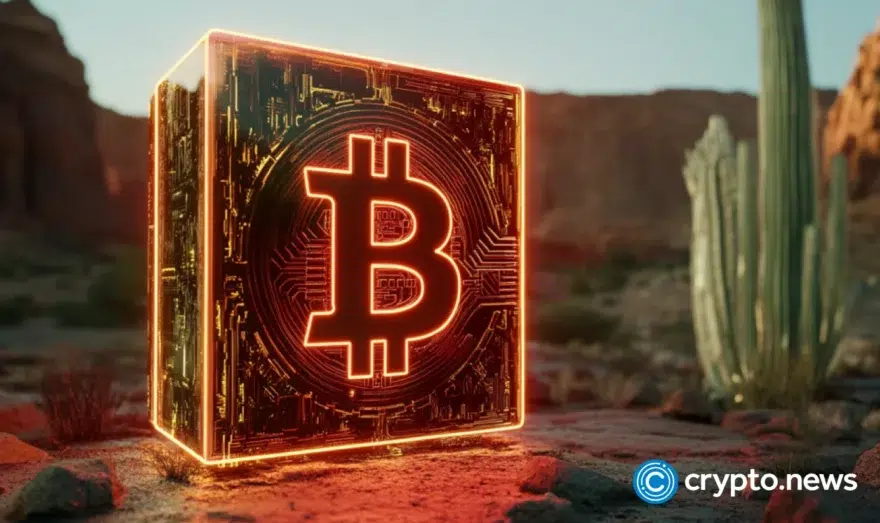Payments shouldn’t be handled on the Ethereum and Bitcoin networks | Opinion

Disclosure: The views and opinions expressed here belong solely to the author and do not represent the views and opinions of crypto.news’ editorial.
Crypto companies are currently making payments entirely wrong because they are not accounting for the most important people: the end consumers. Earlier this year, it was reported that cryptocurrency investors were facing delays concerning withdrawing funds deposited on the Ethereum blockchain.
This was following its significant software upgrade, and it created persistent headaches for Ethereum, a platform, which aims to have its technology widely used for instant transactions. This resulted in ether worth around $1.4 billion being stuck in a withdrawal queue. The delays were a prime example of the limits in the transactions that Ethereum could process.
This highlighted its potential shortcomings in terms of becoming a widely-used financial infrastructure. While Ethereum has grown popular within the crypto market, it has yet to be used in mainstream payments, commerce, and finance. Despite these challenges and issues, Ethereum holds a superior position, and users continue to stand by it.
The reason for this is that it is fairly decentralized, which is key for preventing a chain from being hijacked by those validating it and for network security. It is the most decentralized smart contract blockchain within the crypto world. Ethereum offers a low barrier to entry in that anyone with the ability to set up a miner can validate transactions on the network with its proof-of-work (PoW) consensus model.
This model also requires computational input to approve the transactions, which dislocates control from the network to control over supply. Bitcoin, on the other hand, has gained acceptance as a payment method for businesses across the globe. However, the volatility of it remains a barrier for others embracing payments on Bitcoin networks.
Handling payments on Bitcoin networks may offer some advantages, like the potential for increased profits. However, its value drop can cause serious losses for users, occasionally exceeding the profit from the transaction. The volatility of Bitcoin’s value and the anonymity increase the risk of fraud. When transactions are verified within the Bitcoin network, each node within the decentralized system has to verify every transaction.
Additionally, the network can only process a specific number of transactions within a certain timeframe, such as a block. International payments through stablecoins on blockchain networks could provide an improved experience over traditional fiat transactions because they offer increased speed.
User experience and crypto world
In saying that, the overall UX for crypto transactions still lacks integration with existing systems and accessibility. We are far away from having consumer-ready crypto products regular people can use effectively. The UX is obscene, and the steps to make crypto payments are exponentially more than fiat ones.
UX’s problems range from underlying flaws in the architecture to problems with business models and basic UI design issues. UIs are horrible, UX is obscene, and the steps to make crypto payments are exponentially more than fiat ones. Poor UX is everywhere in the crypto world, and the consequences of this are users losing significant amounts of money, but also woefully insufficient levels of security, and sub-optimal user adoption.
One of the biggest challenges facing transactions on these networks is their limited transaction processing capabilities. This leads to high fees and slow transaction times, which can certainly be barriers to wider adoption. Automatic payments are not really what’s important here. What is important is understanding all the minor things that make up for an excellent experience and seamless payments.
Without this, crypto payments will not have a future at all. Bitcoin has experimented with some scaling up, such as the Lightning Network, a layer-2 solution built on top of the Bitcoin blockchain. Its primary goal is to address Bitcoin’s scalability issues, allowing for cheaper and faster transactions by enabling off-chain transactions via a network of payment channels.
The mainstream adoption?
The Lightning Network was launched in 2018 and hit a total value of $140 million. This network is growing, although there are still challenges that hinder its mainstream adoption. Therefore, it is uncertain whether it is the right solution for improving payments on Bitcoin networks. It is, after all, still an experimental technology. Despite the challenges facing Bitcoin as a payment method, it continues to be embraced as a viable alternative to traditional payment methods.
This only further reinforces the need for users to take an informative yet cautious approach. The future of payments on these networks will depend on their ability to address the current challenges of transaction processing, fraud, volatility, and the user experience whilst still ensuring advantages such as the potential for profit and anonymity.
When it comes to Ethereum, the ecosystem is growing due to the surging popularity of its dApps in areas like gaming, finance, and technology. However, although it may seem like a perfect platform to the naked eye, it has considerable issues that must be addressed. These issues surround accessibility and scalability.
Addressing these problems will ensure widespread adoption, but there is no doubt that this network is faced with many challenges. As time goes on, if these issues are not solved, it is difficult to predict whether Ethereum will be able to compete with its competitors. Investing in Ethereum comes with some disadvantages. Scalability is a problem, but there are also issues with its code and its supply.
Ultimately, Ethereum often has long transaction times and high gas fees. While Bitcoin is a decentralized currency, and this is generally a benefit, it can also be viewed as a disadvantage since it means Bitcoin is not regulated. It is not like with traditional currencies where they are regulated by central banks.
These kinds of transactions do not arrive with any legal protection and are irreversible. Due to its decentralized nature, there is also no guarantee of a minimum valuation. If investors decide to stop using them and sell them, their value can decrease significantly and impact users with a vast amount of cryptocurrency.
To support the worldwide adoption of cryptocurrencies for everyday transactions, we desperately need a network that demonstrates its capabilities to handle a certain amount of transactions without delays or processing issues. The network must also offer credibility that it can handle the growing amount of transactions in the future. In essence, these networks must be scaled up. The transaction capabilities of networks like Bitcoin and Ethereum are still quite low, and the demand to carry out these transactions will only grow.














